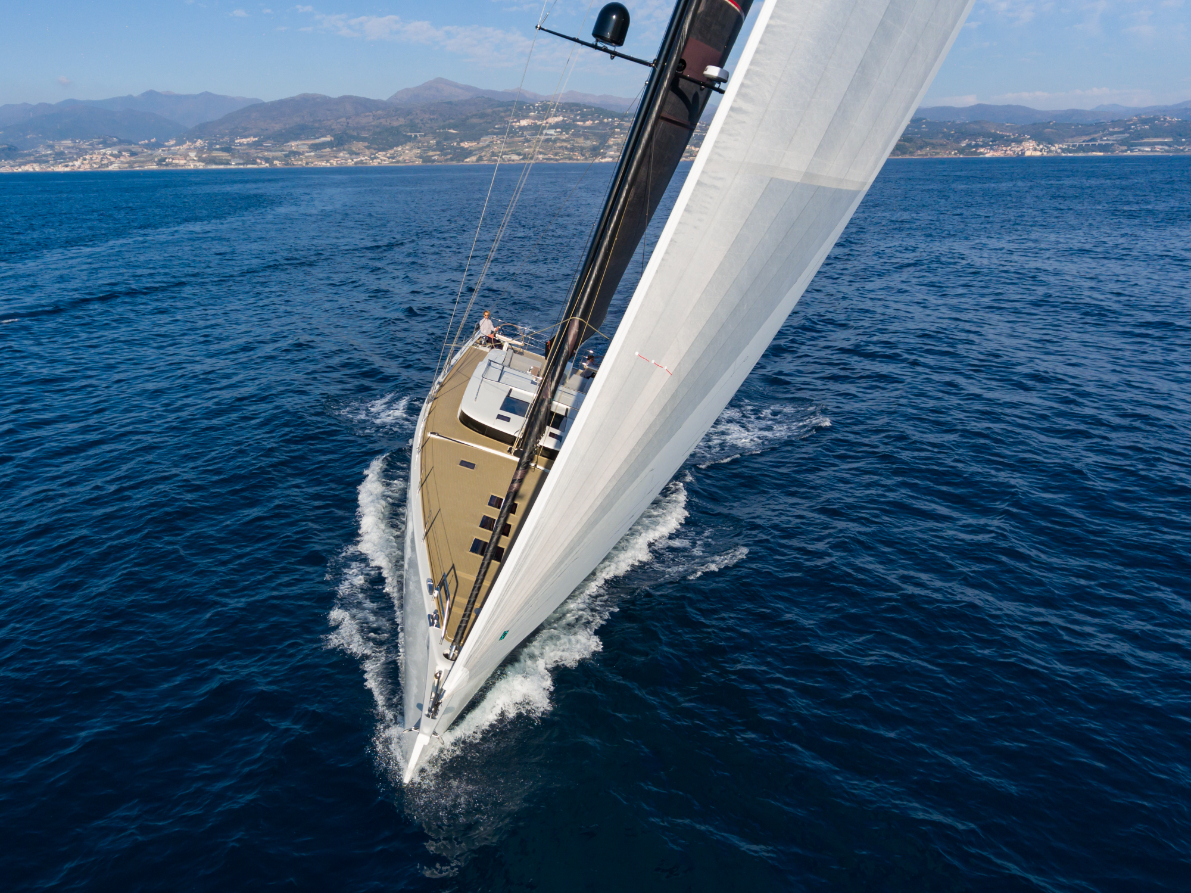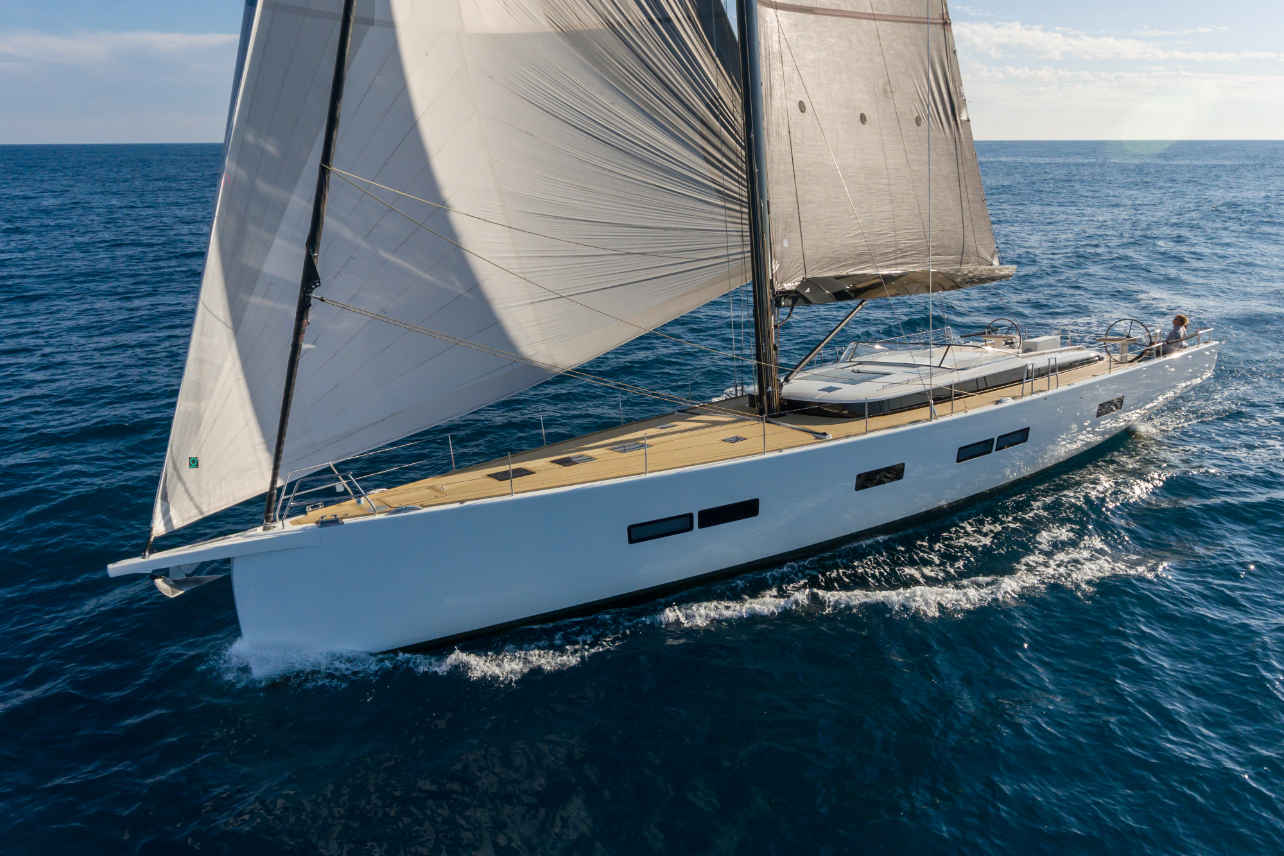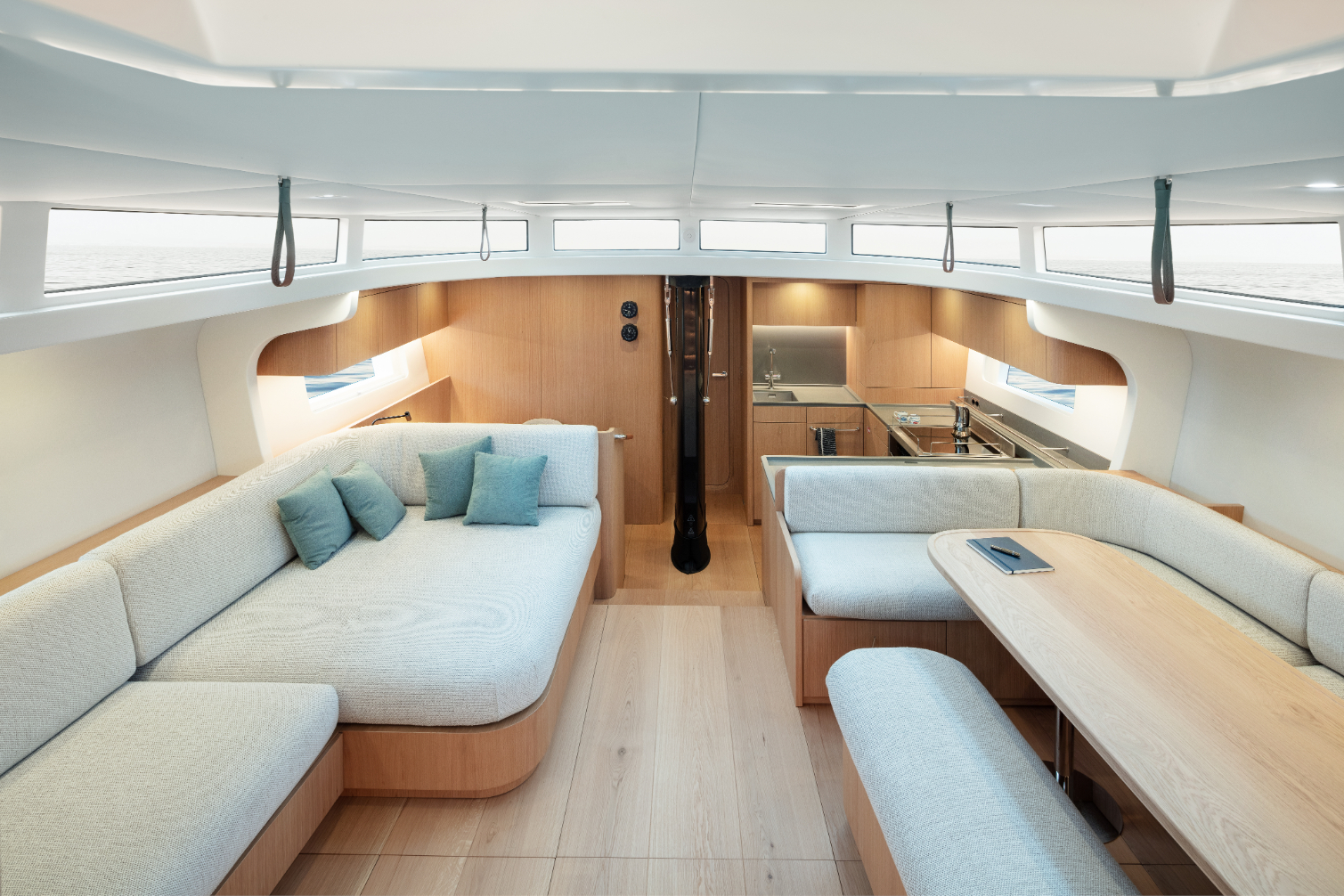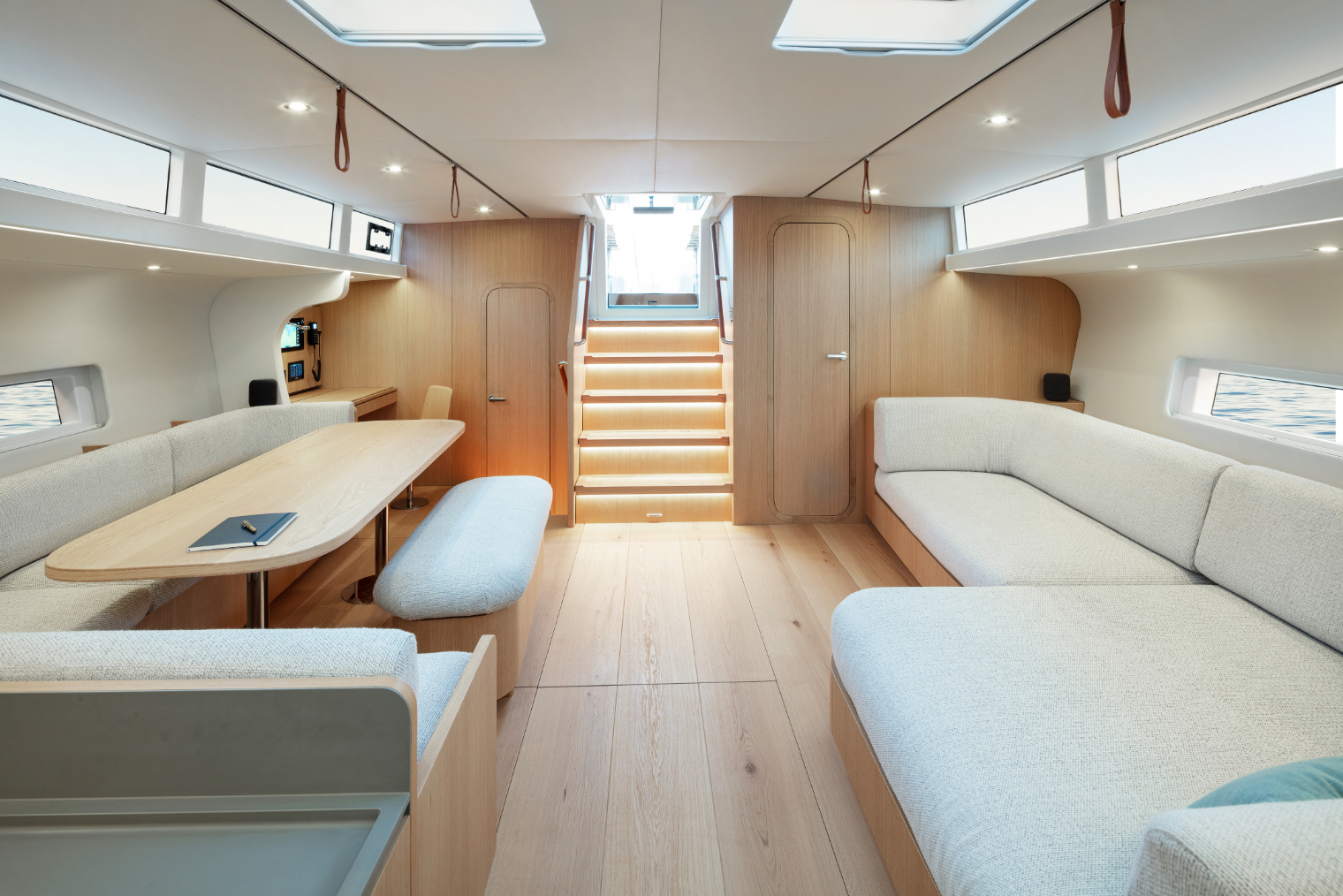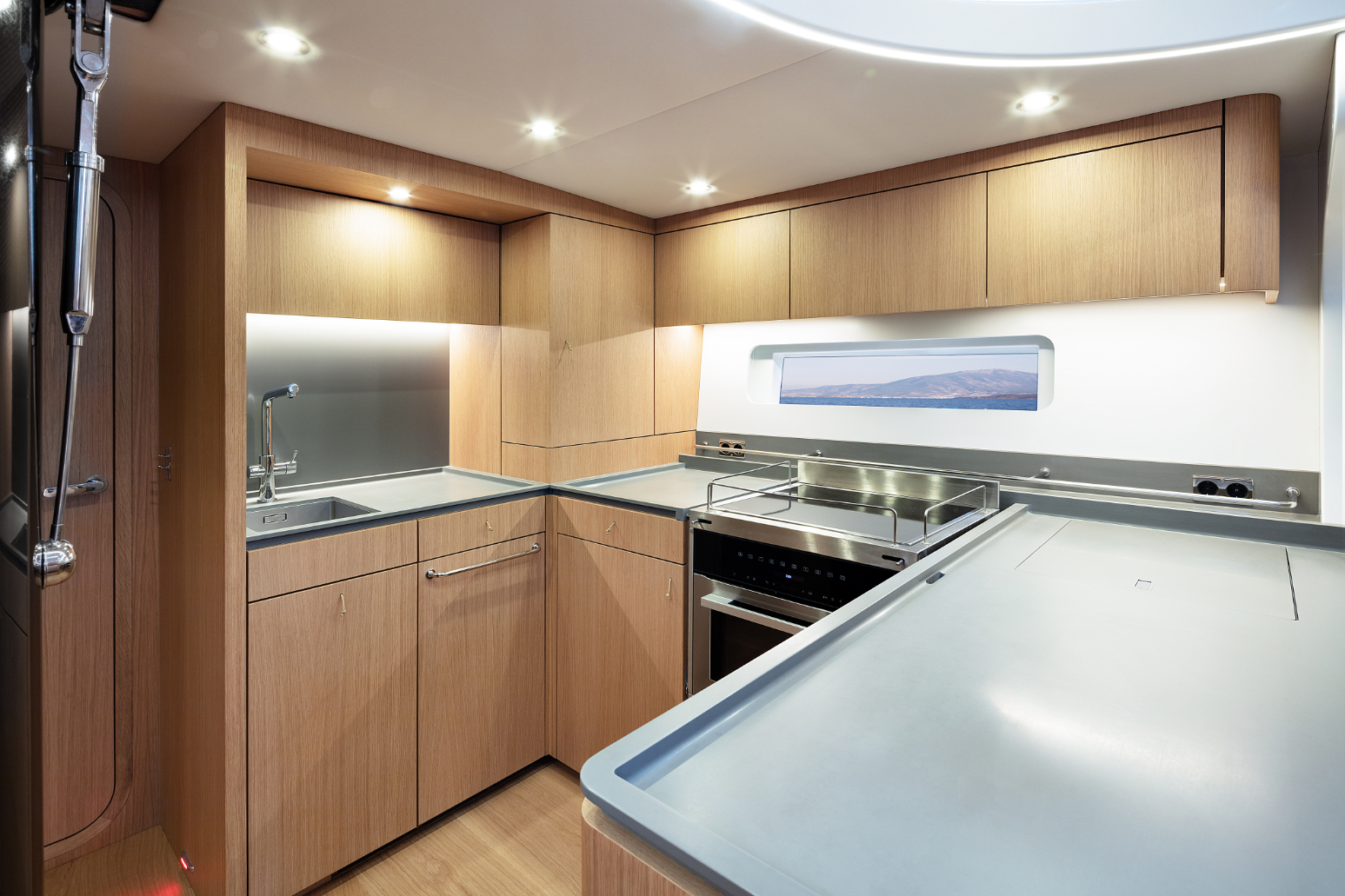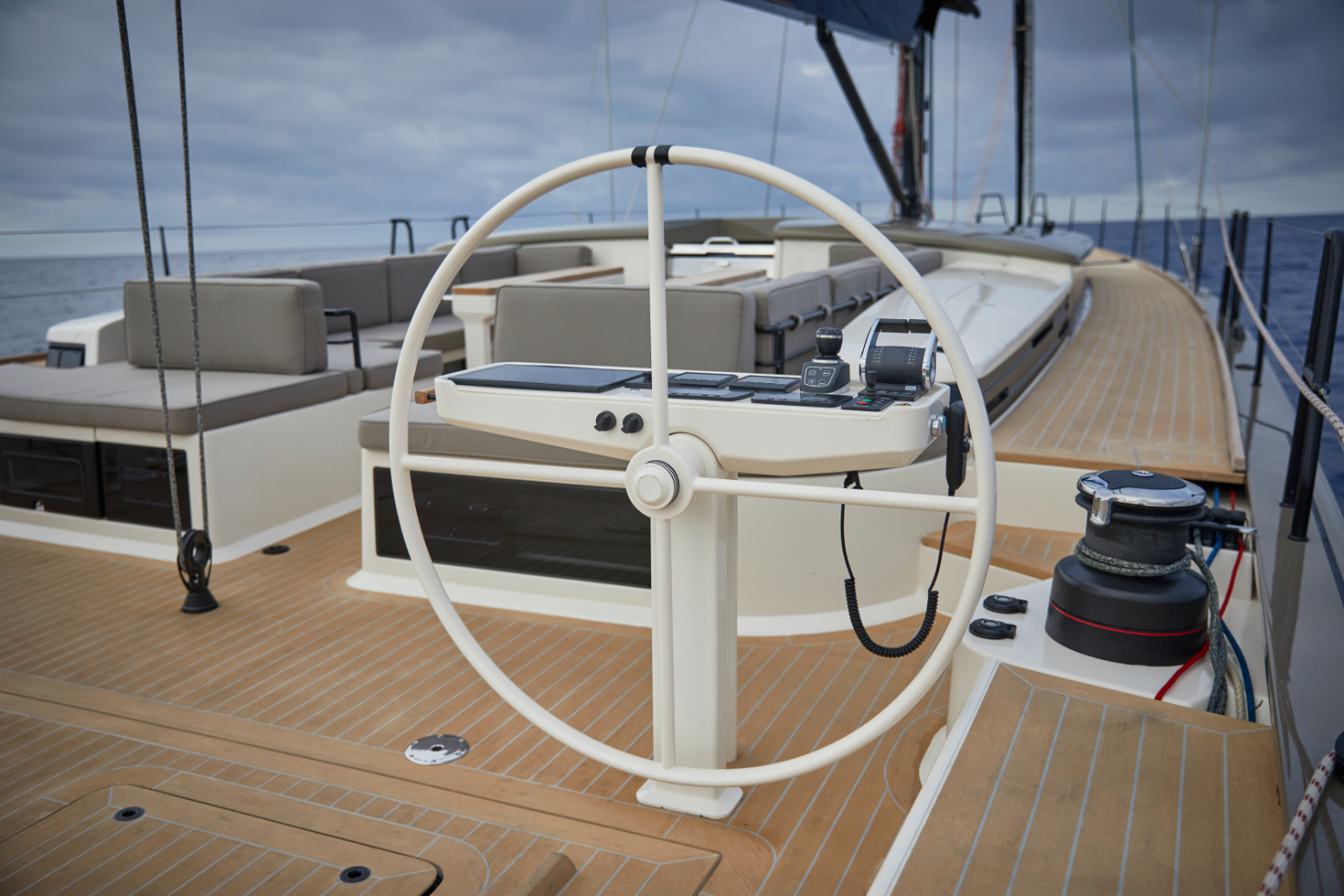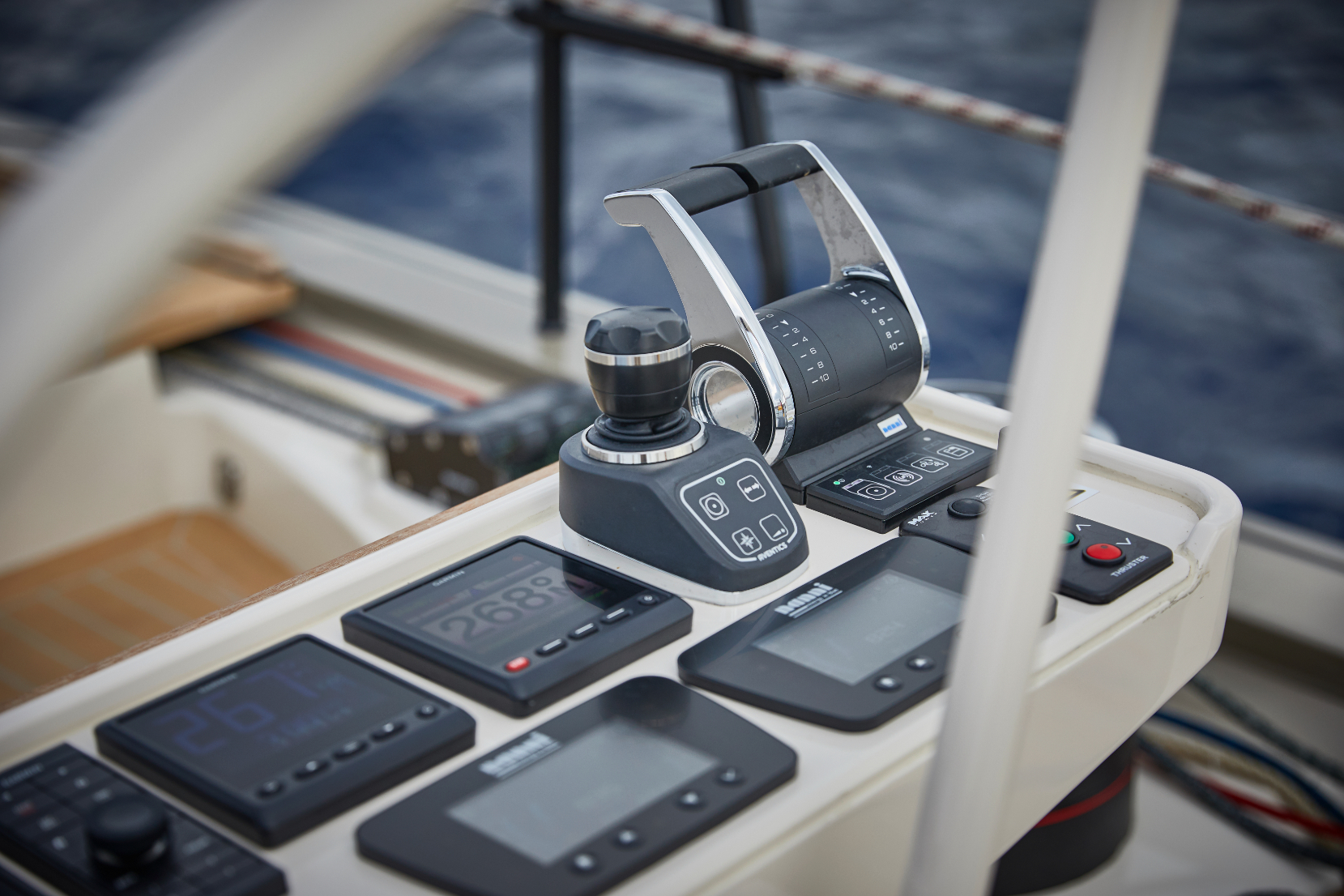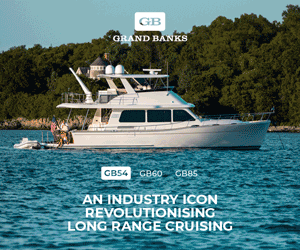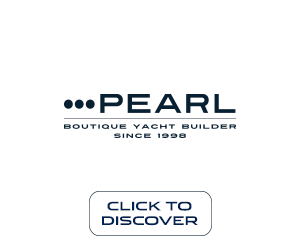Light fantastic
Ocean inspects the Y7 from YYachts and finds it puts simplicity back into sailing without compromising on luxury.
Written by Sam Fortescue
10 August 2022
It’s a familiar story. The business owner who does well, sells out of the market at just the right moment and sets off for a sun-laced tropical horizon only to … get bored.
This is the tale behind Michael Schmidt and his return from a good-life cruise to the Pacific to set up YYachts in damp, chill northeast Germany.
But unless Schmidt had come to the characteristically blunt conclusion that all the islands are the same (white sand, green trees), there would have been no Y7, and that would have been a real shame for the sailing world.
When I first sailed the boat in 2019, there was a real sense that he was taking a punt with the new shipyard. “If I don’t lose money now, I’m happy,” he told me back then.
Barely two years and a pandemic later, he has sold no fewer than ten of these bewitching 22-metre minimalist sailing toys with a couple of 90-footers also in the pipeline.
There are a couple of sound reasons why. Not only do the Bill Tripp-designed yachts look amazing with their clean, simple lines, their low coachroofs and open decks, they sail well too.
“Built with a sweeping clean deck in carbon fibre at a weight of around 31 tonnes and almost 300 square metres of sail, this boat is fun even in light winds,” explains Tripp of the Y7.
“This combination of speed, reliability and comfort is ideal for an owner seeking a world-cruising boat that will also perform well in fun regattas.”
Schmidt is more to the point. “How many boats today allow you to go upwind in Force 2 or 3 without the engine?” he asks. “How many are good to sail?”
It’s a rhetorical question, as I know. During my 2019 sea trial, we managed to ghost upwind at around 5 knots in no more than 5 knots of breeze.
Later, we got a magical 12- knot sea breeze, which had us humming along on a reach at 9 knots. For one delivery across the Bay of Biscay, a Y7 is said to have averaged 14 knots, but this is seat-of-the-pants sailing in tough conditions.
Still, lightness and speed is not the whole story. Schmidt’s other guiding principle was to make the yacht as simple as possible.
Simple enough, in fact, that an owner fresh to the sport could expect to enjoy the boat singlehanded. And, sure enough, the first Y7 owner I met was a converted motor-boater looking for something more fulfilling and less polluting.
Schmidt has looked with a critical eye at what is strictly necessary to equip a boat of this size.
For instance, there’s no backstay, not even runners – the heavily aft-swept spreaders do that job, like on a catamaran. He says this makes for a better shape in the fathead main.
All the halyards and sheets return via under-deck conduits to the helm for shorthanded sailing, and there’s a retractable bowthruster with joystick control for easy docking.
The ground tackle is conveniently stowed in the integrated bowsprit, which also serves to launch the asymmetric for fast reaching and running.
Schmidt has chosen to give the boat twin 80 hp Nanni saildrives rather than a single, more powerful engine on the centreline.
“It’s easy to install and about the same weight as a single engine,” he says. “And with just one engine at optimum revs, you can cruise at 7.2 knots, so you have huge range.”
He’s also steered clear of some of the bells and whistles considered standard on other high-end sailing boats. So, you won’t find any swish digital switching on board – just attractively designed, traditional bi-pole switches on the nav station switchboard and in the cabins.
“All the important electronics are analogue,” says Schmidt. “Days lost due to vulnerable technology are a no-go on this yacht.”
Nor is there a millilitre more hydraulic fluid aboard than strictly necessary: just the boom-vang is hydraulic. Winches are electric, as is the drop-down bathing platform and the cavernous top-opening lazarette.
Schmidt’s experience with hydraulics is that they are fault-prone and expensive.
“I wanted simplicity. I didn’t want to spend money on things that break and you don’t need. We have to explain to our customers the consequences of their choices,” he says.
With his singular view of the function of a large sailing yacht, Schmidt was hardly going to stuff the interior with dark wood and blue upholstery in the classical style.
His taste runs to something more Scandinavian, so perhaps it’s not surprising that a Danish designer was brought in to do the first Y7, Bella.
No, the surprise is he chose an architectural design house with no experience with boats. And yet, Norm of Copenhagen did such a good job they won Wallpaper* magazine’s 2020 Design Awards.
“We wanted to challenge ourselves and step out of our comfort zone,” explains Katrine Goldstein, Norm MD. She continues, “We had great fun with this project and the challenges that came with it.”
Don’t think for a moment this is a Spartan boat, even though Goldstein describes the interior as “soft minimalism”. There’s a wealth of contrast and lots of really pleasing details, but no fuss.
Take the stitched leather straps that run along a track set into the headlining in the saloon to steady you as you cross the open space on the heel. Or the way an understated leather thong unlatches every locker door.
And the lighting is all done via hidden LEDs, giving a warm finish to the interior. I also like the fact the boat’s structure is visible – you can see the curves of the hull and even the bulkheads supporting the deck above.
“We wanted to minimise the classic round corner as well as gaps and wasted spaces that occur when working with an irregular shape,” adds Goldstein.
“With applied wood veneer and papier stone, architectural hardware in blackened steel, not to mention contrasts in the smooth and coarse-woven textiles, the chosen materials amplify each other through their textures. Colours are tone-on-tone for a subdued, moody setting.”
The owners of several subsequent Y7s have had YYachts work out a different interior, but the standard choice is between a light, chalked-oak finish or a more chic and austere white finish coupled with smoked-oak cabinetry.
A few tweaks to recent hulls have seen the doors given rounded corners for a more maritime feeling.
With the white of the headlining, the hull lights and the low-profile windows in the coachroof, there’s plenty of natural light in the saloon, which is split between deep, comfy sofas and an eight-person dining table.
By positioning the galley across the full beam amidships, reached down a few steps from the saloon, it keeps the space looking clean and uncluttered, but it’s still easy to hand plates up to the table.
Options here abound. One hull has pendant-style lights above the dining table, a magazine rack built into the sofa’s armrest and bookshelves everywhere.
Bella was much more minimal – just a television on an otherwise smooth wall with no frame to the flush-mounted door.
The configuration of the space is moderately flexible. You can opt for three or four cabins, in either double or twins, and move the galley back aft on the port side.
In all layouts, there’s a small cabin with two bunks and a private shower room for the captain and a mate on the port quarter.
Michael Schmidt claims this is an environmentally friendly boat, but that concept should be taken with a grain of salt – carbon fibre is many times more carbon- intensive than traditional GRP.
Where he does have a point, however, is in the elimination of unnecessary gear and gadgets aboard, and low-wind sailing.
As he says, “The world is changing, and sailing is changing drastically, too. People want boats with space and simplicity.”




